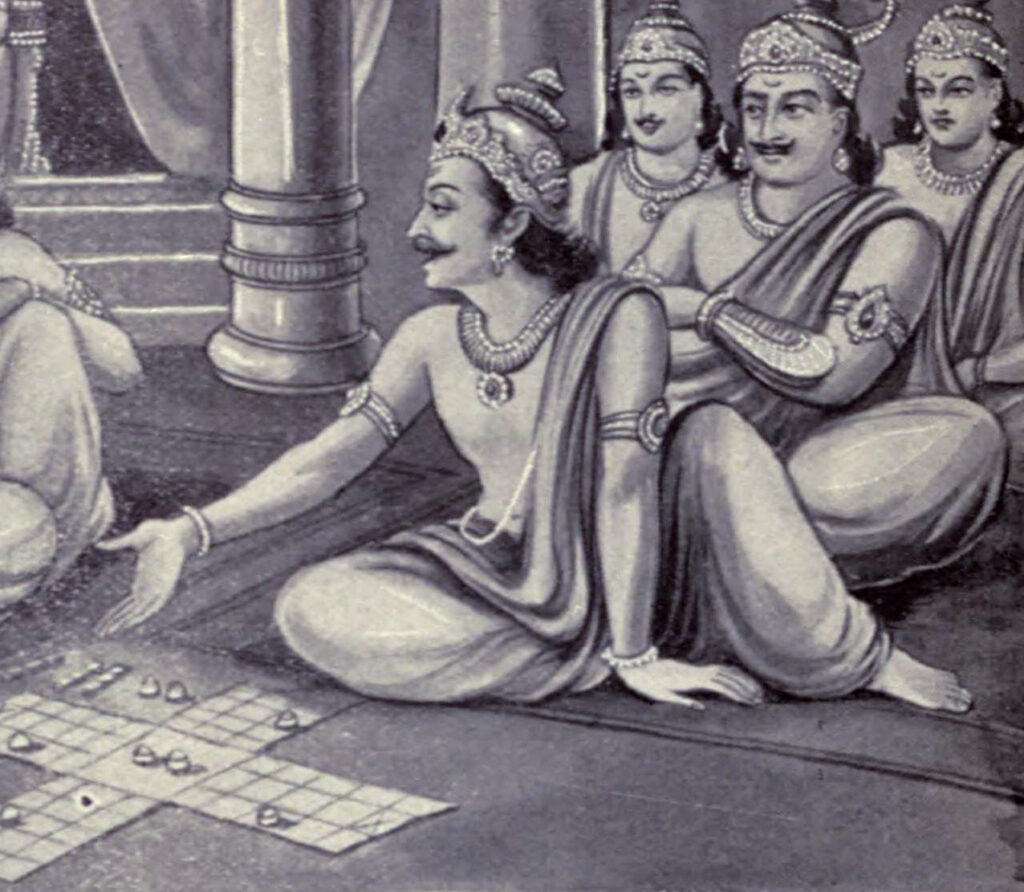A Summary of the Sabha Parva

Note: The word sabha means assembly. Therefore, the Sabha Parva – which is the 2nd parva of the Mahabharata – deals with the building of the grand assembly hall of the Pandavas and the events that happened thereafter. The Sabha Parva, which is made up of 2507 shlokas (verses), consists of the following stories.
The Sabha Parva begins with Maya Danava (the architect of the asuras) constructing a grand palace for the Pandavas, based on celestial designs.
Several sages and kings are invited to celebrate the completion of the palace. Sage Narada is the first sage to arrive at the Pandavas’ palace. Narada enlightens them with various descriptions and stories of the celestial regions and also grand kings of the past who lived in Bharatvarsha.
This parva also deals with the preparations for the Rajasuya sacrifice (the campaign of universal conquest) by Yudhishthira.
At that time, Jarasandha, the king of Magadha, had captured several kings and princes and was going to offer them in a sacrifice. Sri Krishna makes a plan to vanquish and slay him with the help of Bhima. He also frees the kings and princes who were held captive by Jarasandha.
In this parva, the four brothers of Yudhishthira go in four directions to being all the kings under their sway. They succeed and return with huge tributes. The conquests of the four brothers are described in detail.
After accepting Yudhishthira as their emperor, these kings arrive at his Rajasuya Yagna with even more tributes. All this along with the slaying of Sisupala is also described in this parva.
Duryodhana’s awkwardness in the Pandavas’ palace which was filled with celestial mirages, Bhima’s ridiculing of Duryodhana, and the latter’s subsequent sorrow, anger, and jealousy are also described in this parva.
Also described are the preparations Duryodhana and Sakuni made to deceitfully snatch the kingdom of the Pandavas. The game of dice and the shameful incidents that happened as a consequence are also described in detail.
The Sabha Parva ends with the Pandavas leaving their kingdom and going into exile.
Image credit: Thanks to Ramnarayandatt Shastri Pandey for making the image of the game of dice available in the Public Domain at: https://commons.wikimedia.org/w/index.php?curid=25427163
Previous: A Summary of the Adi Parva
